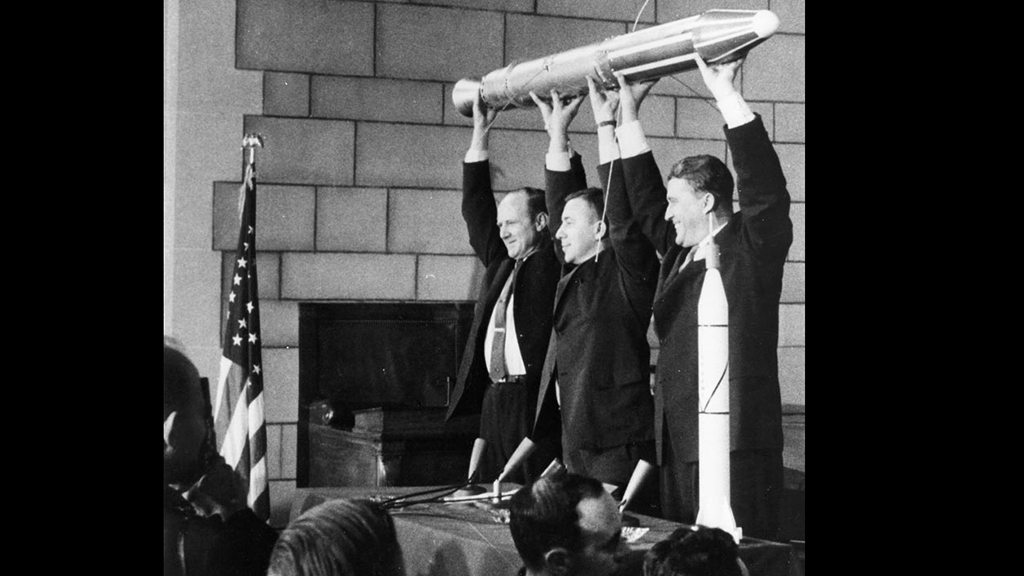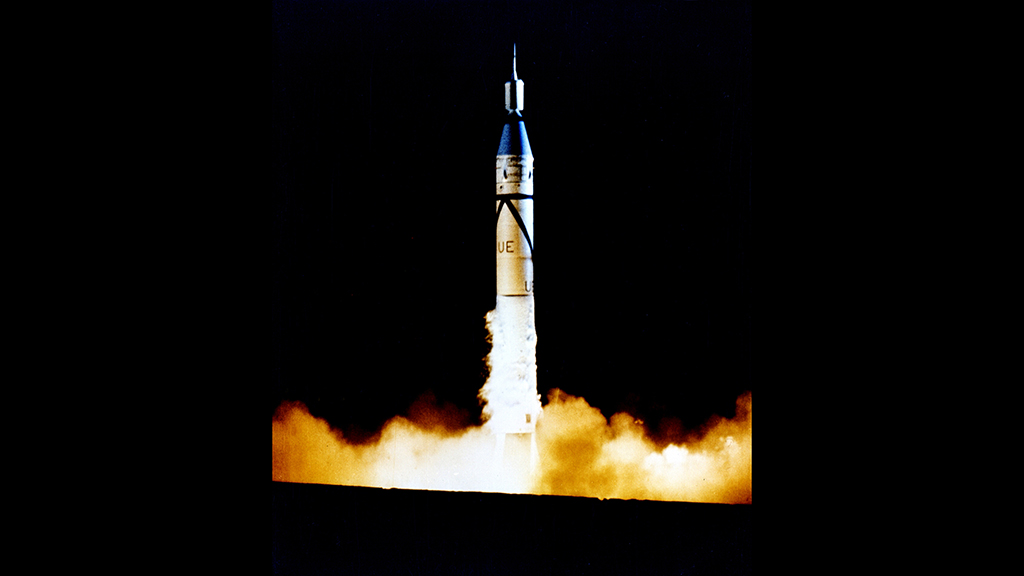Earth
Sun
Planets and Moons
Universe
ID: 12943

Explorer 1 marked the United States’ first step into the dawn of the Space Age. Just three months prior in November, 1957, the Soviet Union had launched humanity’s second satellite into orbit. By this point, the United States was under immense pressures to compete with the Soviet achievement, which only mounted when the U.S. Navy's Vanguard rocket exploded on the launch pad with the United States' first attempt to launch a satellite. Explorer 1 had been in the works at the Jet Propulsion Laboratory and was quickly readied for launch. On January 31, 1958 it made orbit and became not only the first U.S. satellite, but also the first science satellite. Its first discovery was of the Van Allen radiation belts, a collection of charged particles trapped in the Earth’s magnetic field. Trapped there, the charged particles don't harm Earth or life on it, but they can pose a threat to orbiting satellites and astronauts. Understanding the dynamics of this region is essential for protecting technological assets and planning crewed space missions. This discovery opened the doors of space exploration, the first of many in the last 60 years about our planet, our solar system and the cosmos. Watch the video to learn more.



Explorer 1




Source Material
For More Information
Story Credits
Lead Producer:
LK Ward (USRA)
Lead Writer:
Mara Johnson-Groh (Wyle Information Systems)
Writer:
Miles Miller-Dickson (Student, University of Maryland College Park)
LK Ward (USRA)
Lead Writer:
Mara Johnson-Groh (Wyle Information Systems)
Writer:
Miles Miller-Dickson (Student, University of Maryland College Park)
Please give credit for this item to:
NASA's Scientific Visualization Studio
Diagram of Explorer's 1 Instrument , Credit: NASA/Marshall Space Flight Center
Image of Earth's Radiation Belts, Credit: NASA's Goddard Space Flight Center/Johns Hopkins University, Applied Physics Laboratory
NASA's Scientific Visualization Studio
Diagram of Explorer's 1 Instrument , Credit: NASA/Marshall Space Flight Center
Image of Earth's Radiation Belts, Credit: NASA's Goddard Space Flight Center/Johns Hopkins University, Applied Physics Laboratory
Short URL to share this page:
https://svs.gsfc.nasa.gov/12943
Keywords:
SVS >> HDTV
SVS >> App
NASA Science >> Earth
NASA Science >> Sun
NASA Science >> Planets and Moons
NASA Science >> Universe
https://svs.gsfc.nasa.gov/12943
Keywords:
SVS >> HDTV
SVS >> App
NASA Science >> Earth
NASA Science >> Sun
NASA Science >> Planets and Moons
NASA Science >> Universe








